Return to the jungle: British in Brunei
British marines overcome steep slopes in Brunei jungle
The British Army pays great attention to combat training in the jungle in preparation for a wider range of special operations. Report from the first courses of the deep intelligence group recently conducted in Brunei.
The jungle is one of the most complex natural environments in which military operations can be conducted. Soldiers are subject to physical and psychological pressure, and electronic systems, which are commonly used in most theaters of war, cannot guarantee 100% reliable performance in the jungle or will bring little benefit. Also, high standards of basic military service are paramount, when basic skills and a good level of training are required to effectively perform tasks.
What makes the jungle so difficult to work with is the lack of vehicles and air support. With a minimum of accessible roads and limited visibility from above, soldiers must carry everything they need throughout the operation.
Doing military service in the jungle is not an easy task. Intelligence patrols operating in open areas in temperate or desert zones can very often see an enemy hundreds of meters and even a couple of kilometers away using optical systems. However, the jungle reduces the observation range to tens of meters, negating all the advantages of surveillance systems.
Soldiers use mechanical sights on their weapons instead of optics, which constantly fog up, night vision goggles are of little use, since they provoke a tunnel effect (a sharp narrowing of the field of view), and while thermal imagers could bring at least some benefit, but because of the trees their range is very limited .
Changing priorities
The British army, like other Western forces, was concentrated on Afghanistan for more than a decade and had little time and few resources to train in the jungle. However, since large-scale fighting in the desert has ended, and terrorist and extremist groups are moving closer to the tropics, the ability to fight in remote areas rises to the top positions in the list of priorities.
The development and expansion of basic skills and the search for appropriate equipment for action in the jungle is vital. To this end, in December 2014, the British Army completed a pilot project called the Long Range Reconnaissance Patrol Course Depression Group Course (LRRPC) in the jungles of Brunei.
The British garrison in Brunei is about 2000 man, known under the British designation BFB (British Forces Brunei), includes a training unit TTV (Training Team Brunei) and a "local infantry battalion" from the royal Gurkian infantry regiment, which provides support for Sultan, which pays for part of the cost. February 17, during a visit to the UK, Sultan of Brunei and Prime Minister David Cameron extended the agreement on the British BFB contingent for another five years.
During the year, TTB conducts several courses in combat in the jungle, including two-week instructor courses, five-week instructors in operational routes and seven-week basic instructors in jungle combat instructors.
They allow British soldiers and infantry to master the skills of survival and fighting in the jungle. However, LRRPC differ from the above courses. Since the enemy can hide in these environments with extraordinary ease, the only way to determine his exact location is to activate foot reconnaissance patrols that use jungle-specific tactics and methods to detect enemy locations and then send larger assault forces to a given area.
Thus, the LRRPC courses were organized in order to attract personnel of reconnaissance platoons from light infantry battalions and to give them experience in one team in difficult tropical conditions.
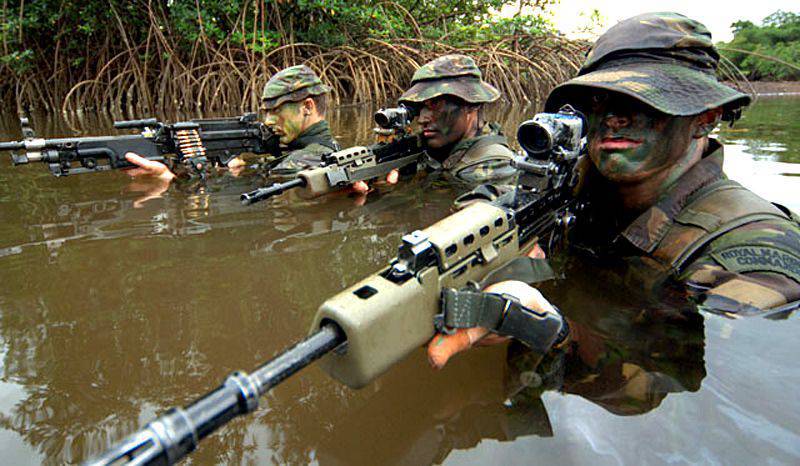
Units from the Gurksky infantry regiment boost the river. While working in the jungle, soldier uniforms are almost always wet and wet.
Honing skill
The head of the Brunei garrison, Major Pete Hulton-Hart, said in an interview that LRRPC can hone skills and craftsmanship and develop special techniques and tactics for the jungle. He expressed the view that re-aligning the Army 2020 strategy in the direction of special operations means "immediate deployment in places with which we are not familiar."
Brunei was chosen due to the fact that there are virgin jungles protected from logging by the Sultan; they have higher trees and a higher forest canopy. Some sunlight penetrates under the canopy, it is dark there and therefore there is less vegetation on the ground.
Hulton-Hart continued: “LRRPCs use the local environment to hone their intelligence skills. Most skills are aimed at survival and action in the jungle. Visibility is significantly reduced due to trees and is very hot and humid. It affects people differently, some find it claustrophobic, others struggle with the heat. ”
He explained that the last LRRPC courses were held in Brunei before 2004, and that TTB spent the year organizing a pilot project.
"In the 2013 year, after the last units were trained before being deployed in Operation Herrick [British Mission in Afghanistan], the infantry school in Wales changed its priorities and from Operation Entirety [training the army for Afghanistan] returned to a wider range of possible deployments" .
“We looked at the idea and the head of the BFB garrison decided to try and develop it. In December, 2013, we took up the pen and abandoned outdated instructions for the exercises a decade ago and began to conduct reconnaissance in various parts of the jungle, developing course plans. It took a year of work to develop all our courses and bring them together into one coherent system. ”
What is suitable for the jungle
Severe jungles can severely limit a soldier from a technological point of view, but the problem is resolved by developing a unique materiel, ranging from shoes, clothes, and food to weapons, radio stations, and helicopters. In the absence of access to vehicles, each piece of equipment must be carried by the personnel of the patrol unit, which means that it must be light and practical or go to the trash.
The main initial priorities in the field of equipment are the basic components necessary for walking, sleeping and eating: shoes, hammocks, allowances and water. The entire staff of the TTB garrison, who has vast experience, expressed his opinion about the problems with the kit and personal preferences.
Proper footwear for the jungle is very important, a humid and hot climate means that the feet are constantly threatened with inflammation and the development of the so-called trench foot and therefore the feet must be constantly kept dry (a trench foot (synonym - trench foot) is called a cold foot injury that develops with prolonged exposure to high humidity combined with a moderately cool temperature. This kind of frostbite is often found in the military (for example, in exercises in flooded trenches and jungles), hunters, fishermen, geologists, ryadkov, tourists, etc. with long wearing wet shoes.). Of course, it is very difficult when performing tasks in pouring rain or overcoming water obstacles to keep your feet dry, therefore, shoes should “dump” excess water, and socks should be as thin as possible.
Standard boots of the British military are hermetic in order to keep feet warm in temperate or cold climates, in addition, for greater comfort, they are lined with plenty of material. In the correct jungle boots, there must be some material and air holes to allow water to flow out. Although the standard boots for the jungle in the British army are boots from Wellco, many soldiers prefer alternatives from Alt-berg and Altama, as they are less bulky and allow legs to breathe better.
At night, hammocks allow you to keep the soldier’s warm body at some distance from the wet ground, where many animals and insects also run. For the military, hammocks from Hennessy are recommended, which offers a combined bed with a mosquito net with a poncho bedspread and zippers or Velcro clasps on each side. During the reconnaissance of nearby targets, being in close proximity to the enemy, members of the patrol are forced to lie on small foam mats if they want comfort for a long time, especially at night.
Soldiers are given standard bottles for water and cooking, hexamethylenetetramine and tile packs, an anesthetics pack, but most prefer Camelbak water containers and JetBoil tiles as a more compact and simple solution. According to mission calculations, soldiers must take with them 4-5 liters of water and an extra daily food ration for use in emergency situations.
Other essential components include: parang (large Malay knife); talcum powder for drying feet at night; rope for crossing the river; insect repellent; "Dry bags" for clothes and other things; and a book for long waiting periods. Survival kits are not issued, but you can buy them yourself.
In the conditions of the jungle and the corresponding uniform. The soldiers on the initial course wore a British uniform with a camouflage pattern for any terrain. Multi-Terrain Pattern (MTP), developed in 2010 for wearing in any surrounding conditions. However, formato MTP was tested in Afghanistan, Cyprus, Kenya and the UK and is considered too bright and sandy for a mixed palette of bright greens and dark brown colors of the Brunei jungle. In addition, Velcro fasteners for pockets are considered too noisy.
The commander of the Hulton-Hart garrison is studying a tropical black bag uniform (unofficial), which students may wear. It is similar to the popular tropical uniform with camouflage coloring Disruptive Pattern Material, which was worn before the adoption of the MTP.
Three stages
The four-week initial courses are divided into three stages: the first at the base camp in Seria, in the west of Brunei, for acclimatization and practical exercises; the second in Labi county for orienteering, daily activities, and near reconnaissance; and the third is the weekly final exercises in the Ulu Tutong district, in which all the skills and skills acquired so far are combined into a larger scenario of conducting combat training at the platoon level.
The command post during the final exercises of the LRRPC depth reconnaissance group. Here, communication is maintained by radio with cadets and enemy forces, as well as medical support is provided.
The cadets came from the 2 and 3 battalions, while the parachute battalion, the Irish Guards 1 battalion, the 2 Battalion of the Gurk regiment, the 2 battalion of the own regiment of the Duke of Lancaster, the paratrooper platoon of the charm and heart charm. brigade of marines. About 3 cadets were divided into three platoons, each of four groups of six people.
British forces gained a great deal of experience in fighting in the jungle during World War II, the Malay partisan warfare in the 1948-1960 years, and confrontation between Indonesia and Malaysia in the 1963-1966 years. Based on this experience, the army determined that the optimal size of the group for the LRRP courses was about six people: the commander, deputy commander, radio operator, two scouts and a machine gunner with a light machine gun. The latter carries 400 rounds of ammunition, while the other members of the group carry four 30 rounds of ammunition and the Claymore M18A1 anti-personnel mine.
The first skill, coached during the LRRPC, was the descent of a rope from a helicopter. Accessibility of roads and support of vehicles in the jungle is minimal, therefore, in order to get to the area of operations it is necessary to drop in and evacuate by helicopter. In the TTB training unit in Seria, a platform with a height of about 18 meters was built with a design that simulates a Bell 212 helicopter, so that cadets of the BFB garrison can train as they descend from this platform to the ground. During the preparation, there were five runs.
The next stage is the descent of cadets on a rope from a Bell 212 helicopter hovering about 30-50 meters above the ground and dropping patrols into the previously stripped Landing Point 404 landing area in Labi with the goal of starting the actual training in the jungle.
On the primary base of the LP 404, the cadets first of all practiced orienteering and then were tested on this subject. In the operational scenario of action as an auxiliary navigation aid, soldiers can use GPS (the standard British system is the outdated model Garmin). However, during the LRRPC, the cadets were required to use maps and compasses without using GPS. With visibility limited to about 10-20 meters, and without obvious observation points, soldiers should be guided using the terrain. In practice, this means following horizontals on the map and moving along azimuths for short distances with counting the number of steps.
Step count
Before leaving the camp, the cadets calculated how many steps they took to walk different distances with different slopes - flat areas, middle slopes and very steep slopes, all in full compliance with the terrain which they will overcome while driving in the jungle, as with a kit tools, and without it.
Each shooter has a step counter mounted ahead on a personal weapon, which he presses every 10 meters. In this way, the patrol can determine how far it has traveled along the horizontal or in azimuth and, accordingly, determine its location on the map. Performing these actions when it is hot and humid, you are tired and you still need to perform patrol duties, it is very difficult, especially since the maps are not always accurate.
Later maps were created by air mapping from an aircraft that scans the height of trees to assess the terrain below them. Such a technique can be unstable at best, since the whole terrain is steep tops, ridges, hills and valleys with small and large rivers, completely covered with an impenetrable carpet of greenery.
After the orientation exercises, the patrols train their daily skills under the watchful eye of the trainer instructors, including: ambush without preparation; contact; tactical pause; tactical stops; stops for medical care; taking a position; sending near intelligence; overcoming obstacles; enemy signs; and, finally, signs of shelter. There are methods of following each other and quick change in the patrol group.
Progress in the jungle is difficult and therefore slow. Depending on the height and vegetation on the ground, patrols can cross the entire 2-3 km per day. In areas such as Ghana, for the patrol, it took 10 hours to cover one kilometer. In a tropical climate near the equator, the sun shines 12 hours, from about 6 in the morning to 6 in the evening, so there are time limits for day patrols.
A night in the jungle is another story. Visibility is close to zero, noises and sounds spread over long distances, and the risk of getting lost increases dramatically, so according to British instructions, patrols in the jungle usually do not move at night unless something extraordinary happens. Even when conducting close reconnaissance at night, there is no movement, groups will set up positions for observing the enemy’s camp and registering its activity.
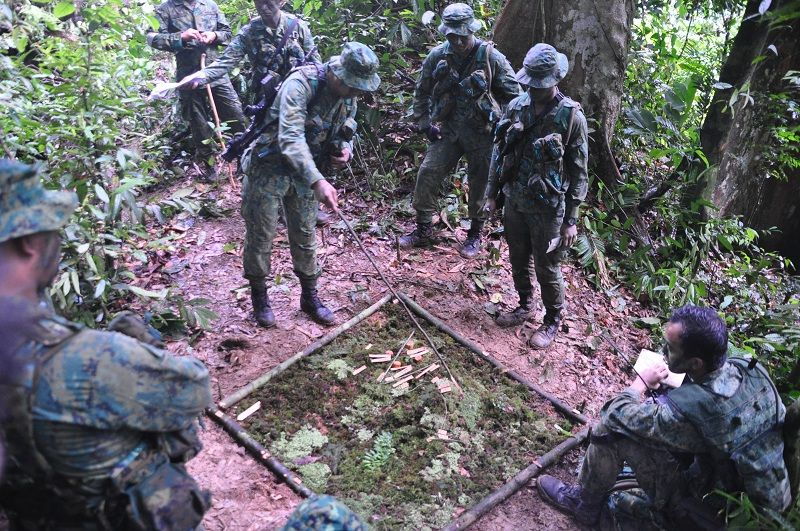
Intelligence unit commanders use the terrain model to inform the attacking unit commander of the enemy’s position and advise on the offensive actions.
Models must be clearly detailed, and they accurately show enemy positions, distances and camp location
"The jungle came to life and took it."
There are three main dangers in the Brunei jungle: heat, sudden floods, and windbreaks and dry branches stuck in a green arch that can fall at any second and seriously cripple or kill a person. According to the experience of the training part, the TTB is the most frequent killer in the jungle, so a thorough check is required at each stop.
Under the canopy of an overgrown jungle it can be cool at times, but the combination of a gentle breeze and suffocating heat means that the temperature can rise quickly as the sun moves through the sky. Soldiers carrying heavy duffel bags and weapons sweat a lot, especially when climbing steep slopes and must maintain water balance at all times.
Flooding sometimes does not seem dangerous and it is placed on the second plan, but when it often pours raining and the relief has steep slopes, craters instantly form from the water in the valleys, and tiny thin streams can turn into falling rapines in a few minutes. The water level of even small streams can rise by several meters and turn the surrounding area into a swamp, and the hillsides into dangerous mud slides.
Other hazards include liana plants covered with tiny sharp spines that cut clothing and skin like a scalpel. They cling to everything that concerns them and the only way to get rid of them is to slowly pull out each thorn.
Black juice trickling from the trunks of felled trees acts as a burning substance that can cause a rash; Wasp stings are painful and can cause allergic reactions, also scorpions, spiders, fire ants and other creatures, such as centipedes, can bite so much that they can put a soldier out of order. Soldiers must fill their pants with boots, and completely release their sleeves to protect their skin from these threats.
During the entire course, there was always one of the three Bell 212 helicopters, ready at any moment for emergency medical evacuation.
Helicopter support is very necessary for throwing and evacuating personnel from remote areas in the jungle. Unfortunately, the 7 Flight rarely adhered to an agreed schedule.
Tropical near intelligence: how it seems
After landing, the reconnaissance patrol will advance through the jungle in order to find out the general location of the enemy. It is likely that their target will be heard before, even before it becomes visible, and when this happens, the patrol will determine the location of the main assembly, on which there will be two soldiers and duffel bags.
Four other members of the group will move from the main gathering place in order to organize the second observation position in a couple of hundred meters from the enemy. From it, two pairs of soldiers will alternately, slowly and methodically, without creating noise, move in the direction of the enemy's position, just to the place where they can take a position. Due to limited visibility in the jungle, it may be within 10-20 meters from the enemy.
During the conduct of near reconnaissance, the two scouts will move in the direction of the enemy along the agreed route. As soon as they thoroughly inspect the area and record detailed information about the enemy and his location, they will return via the same route. After they go beyond the reach of the enemy’s observation means, they will move around the circumference and re-enter the zone from different angles and will do so until the enemy’s position is studied as far as possible. Then they can exchange with a pair that remains in the second position of observation.
Depending on the size of the enemy forces and their position, the conduct of near reconnaissance may take one or two days (or more). From the composition of the patrol, two pairs will work simultaneously or, if a larger reconnaissance group is deployed, then there may be many more.
During patrols, the reconnaissance commander will stay in contact with his headquarters, using a shortwave radio station to send messages at a certain time in order to minimize the operating time of the radio station and to preserve battery power that cannot be replaced in the field. A shortwave radio station is the best way to communicate in these circumstances; Antenna wire is deployed and hung out on trees in order to get a steady signal that is reflected off the ground and goes into the ionosphere. The UK Army uses a Harris Falcon II radio station with a dipole antenna length of 2,4 meters, which has a potential range of thousands of kilometers. It is worth noting that for the VHF radio station it would be difficult to break through the dense jungle thickets.
Attack options
Immediately after the completion of near-intelligence, the patrol will continue to occupy two gathering points for observing the enemy, but the commander will usually return to the main base or a predetermined position in order to meet the attacking forces. The commander of the reconnaissance group reports to the commander of the strike group about the enemy and the terrain features and gives the superior commander two or three options to attack for consideration.
The commander of the reconnaissance group will then lead the assault forces to their initial position in the enemy zone, with which the members of the reconnaissance group will lead the various units of the combat forces to the appropriate positions for attack.
During the LRRPC courses, these tactics and methods are practiced at the branch level, then at the platoon level, in addition, during the weekly final exercises in Ulu Tutong, where the slopes are steeper, the rivers are deeper, and life, by and large, is more difficult than in the district Labi But there are also pluses, at somewhat higher altitudes cooler and less mosquitoes. The cadets there perform more complex daily tasks and work out the interaction with search groups with dogs.
Hulton-Hart believes that the courses were successful. “The cadets seem to have mastered them and act according to the knowledge gained,” he said. “We usually see sergeants and officers on our courses, but in the last courses the cadets were formed into reconnaissance patrols consisting of six ordinary soldiers each. I think they have learned a lot. ”
“The soldiers will go back to their units, I hope they will have the opportunity to apply their skills, mostly in exercises abroad. For example, the Royal Marines will use them next year in Belize and this is fantastic. news».
The head of the garrison added that it was necessary to do a lot of work to reflect on the experience gained in these courses. In addition, it is necessary to understand whether the British army will be able to change its training program and whether it has the resources to conduct these courses in the long term.
Materials used:
www.shephardmedia.com
www.royalnavy.mod.uk
www.en.wikipedia.org
www.army.mod.uk
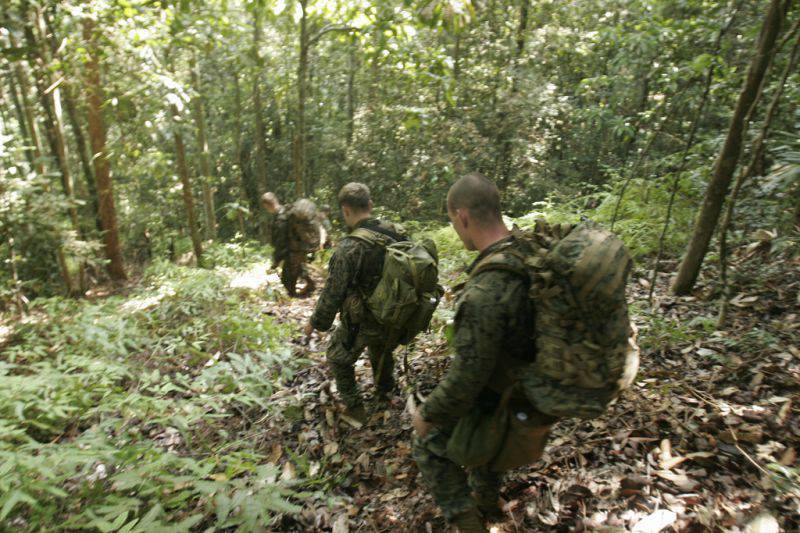
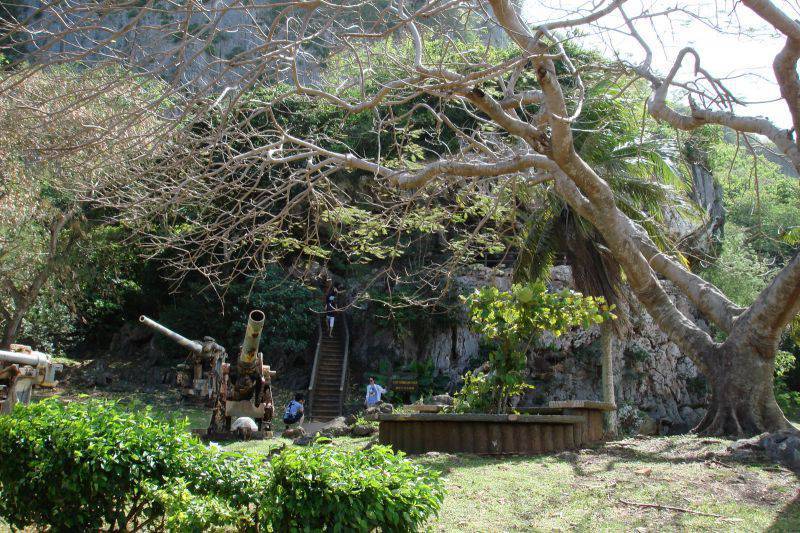
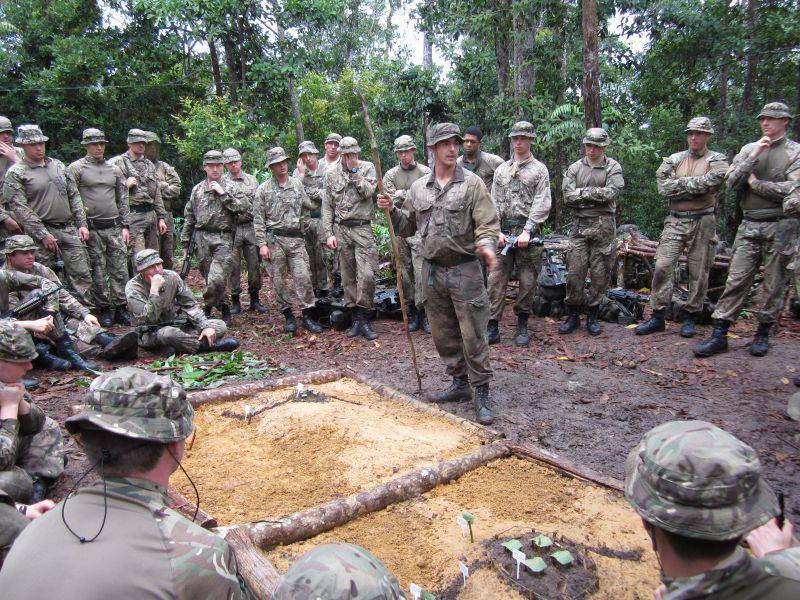
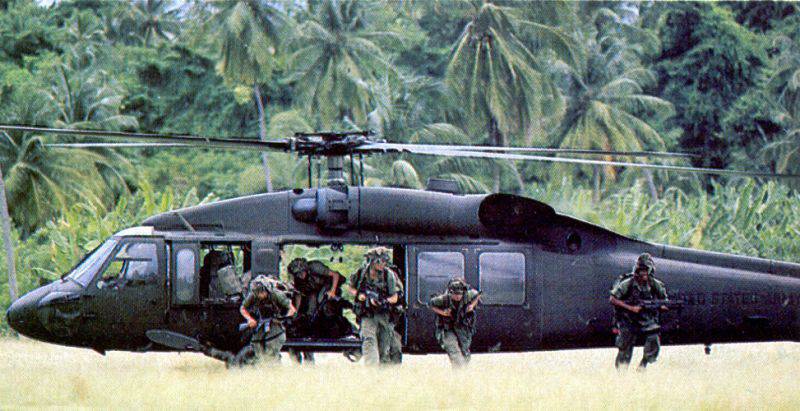
Information